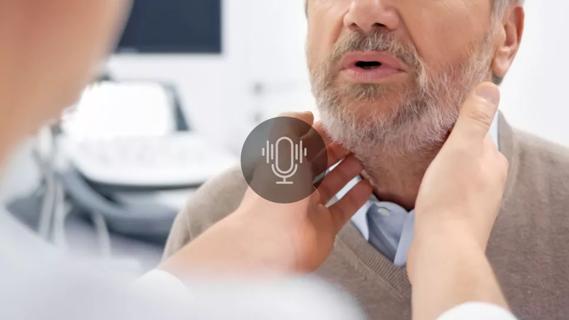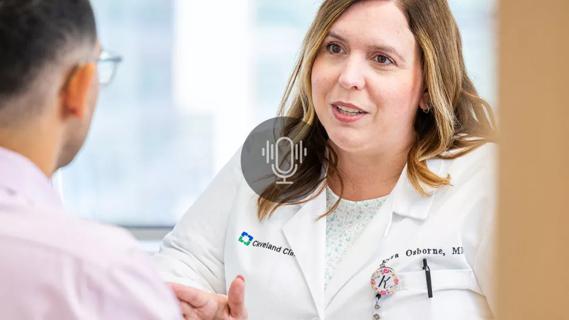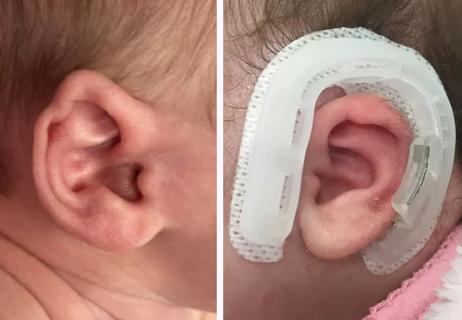The preferred technique

By Raj Sindwani, MD, and Christopher R. Roxbury, MD
Advertisement
Cleveland Clinic is a non-profit academic medical center. Advertising on our site helps support our mission. We do not endorse non-Cleveland Clinic products or services. Policy
Today, endoscopic endonasal approaches have supplanted microscopic approaches to the resection of pituitary lesions at leading academic centers, including Cleveland Clinic. A significant consideration in pituitary surgery is the risk for postoperative cerebrospinal fluid (CSF) leak, which may lead to a morbidity such as meningitis. Reconstruction of sellar defects with the vascularized pedicled nasoseptal flap (NSF) has significantly reduced rates of postoperative CSF leak in skull base surgery.1 However, in many transsphenoidal cases a CSF leak is never encountered, and recent evidence suggests that even low-flow intraoperative CSF leaks do not require NSF reconstruction.2
A “rescue flap,” whereby a limited posterior incision is made, allows the NSF pedicle to be protected and the sella to be approached via a posterior septectomy.3 In this approach, a small incision is created at the level of the sphenoid ostium and carried anteriorly onto the superior nasal septum. The mucosa is elevated inferiorly from the sphenoid ostium, thereby preserving the posterior septal branch of the sphenopalatine artery, which serves as the blood supply to the NSF.
We have modified the rescue flap technique to ensure that both NSF pedicles are preserved, and we use this technique routinely for standard pituitary surgeries. In brief, a rescue flap incision is fashioned with electrocautery and the mucosa is then elevated off the septum from anterior to posterior towards the sphenoid rostrum, displacing it inferiorly. The posterior bony septum is then penetrated and the contralateral mucosal flap is elevated from medial to lateral off the vomer, taking care to landmark and preserve the NSF pedicle on the opposite side.
Advertisement
With both posterior septal arterial pedicles preserved, the sphenoid is opened in standard fashion to approach the sella, and NSFs from both sides can be harvested when and if they are needed (including at a second operation years later). If the NSF is not required at the end of surgical resection, the rescue flaps are placed back into position along the septum and are held in place with a small amount of absorbable packing.
Aside from the time spent raising a potentially unnecessary NSF at the beginning of the case, there are several postoperative considerations in patients undergoing NSF harvest. These patients may be at risk of nasal septal perforation, cartilage necrosis and resultant nasal deformity. Moreover, they often experience significant prolonged and bothersome postoperative nasal crusting.4 The additional benefit to raising the NSF at the end of a case is that it may be tailored to fit the surgical defect in terms of length and width required.
After tumor resection, the surgical bed is examined thoroughly to assess for CSF leak. In cases with no CSF leak or a low-flow CSF leak, a layered reconstruction with free grafts (allograft or mucosa from nasal floor or middle turbinate) is sufficient.2 In cases where a significant CSF leak (i.e., a high-flow leak resulting from communication into a cistern or ventricle) is present, the previously preserved pedicle and septal mucosa are fashioned into a NSF to fit the size and geometry of the defect.
While the NSF is the workhorse for reconstruction of high-flow CSF leaks after skull base surgery, it is infrequently needed for routine cases. We advocate for the bilateral pedicle sparing rescue flap approach to be used in standard pituitary surgery when a high-flow CSF leak is not expected. This approach preserves both NSF pedicles and offers the advantages of shorter operative time, eliminating the morbidity and effort of raising an upfront NSF, and a more tailored approach to sellar reconstruction.
Advertisement
Dr. Roxbury is the Advanced Rhinology and Endoscopic Skull Base Surgery Fellow with the Head & Neck Institute. Dr. Sindwani is Vice Chairman of the Head & Neck Institute and Section Head of Rhinology, Sinus & Skull Base Surgery. He is also Co-Director of the Minimally Invasive Cranial Base and Pituitary Surgery Program; he has a joint appointment in Cleveland Clinic’s Rose Ella Burkhardt Brain Tumor & Neuro-Oncology Center. He can be reached at sindwar@ccf.org.
Advertisement
Advertisement

A roundtable discussion on aesthetic surgery

A look at the wide-range of services provided by periodontists

Expanded patient criteria and surgical advances mean more patients can benefit

Expert advocates for a stepladder approach

With a wide scope of skills, comprehensive otolaryngologists care for patients of all ages in the community

A comprehensive evaluation and multidisciplinary care are key to caring for patients with vestibular disorders

By using free vascularized fascia lata flaps, surgeons can overcome some of the aesthetic and functional challenges historically associated with nasal reconstruction

Restoring the ear to normal anatomy